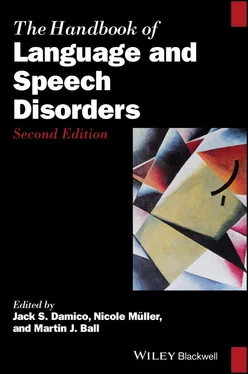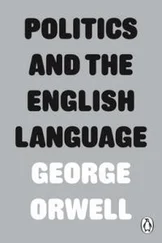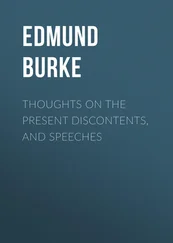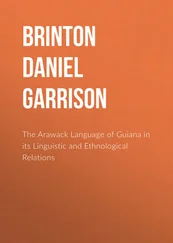33 Huber, M., & Havas, C. (2019). Restricted speech recognition in noise and quality of life of hearing‐impaired children and adolescents with cochlear implants—Need for studies addressing this topic with valid pediatric quality of life instruments. Frontiers in Psychology, 10, 2085.
34 Hyde, M., & Punch, R. (2011). The modes of communication used by children with cochlear implants and the role of sign in their lives. American Annals of the Deaf, 155(5), 535–549.
35 Jiam, N. T., Caldwell, M., Deroche, M. L., Chatterjee, M., & Limb, C. J. (2017). Voice emotion perception and production in cochlear implant users. Hearing Research, 352, 30–39.
36 Kalathottukaren, R. T., Purdy, S. C., & Ballard, E. (2015). Prosody perception and musical pitch discrimination in adults using cochlear implants. International Journal of Audiology, 54(7), 1–9.
37 Kong, Y.‐Y., & Carlyon, R. P. (2010). Temporal pitch perception at high rates in cochlear implants. The Journal of the Acoustical Society of America, 127(5), 3114–3123.
38 Kort, W., Compaan, E., Schittekatte, M., & Dekker, P. (2010). Clinical evaluation of language fundamentals Nederlandse versie Handleiding (CELF 4, Dutch edition, manual). Amsterdam, The Netherlands: Pearson.
39 Kujawa, S. G., & Liberman, M. C. (2009). Adding insult to injury: Cochlear nerve degeneration after “temporary” noise‐induced hearing loss. The Journal of Neuroscience: The Official Journal of the Society for Neuroscience, 29(45), 14077–14085.
40 Lazard, D., Giraud, A.‐L., Gnansia, D., Meyer, B., & Sterkers, O. (2012). Understanding the deafened brain: Implications for cochlear implant rehabilitation. European Annals of Otorhinolaryngology, Head and Neck Diseases, 129(2), 98–103.
41 Lazard, D. S., Vincent, C., Venail, F., Van de Heyning, P., Truy, E., Sterkers, O., … Blamey, P. J. (2012). Pre‐, per‐ and postoperative factors affecting performance of postlinguistically deaf adults using cochlear implants: A new conceptual model over time. PLoS One, 7(11), e48739.
42 Lee, Y., & Sim, H. (2020). Prosodic control in imitative speech of preschool‐age children with cochlear implants. Clinical Linguistics & Phonetics, 34(6), 536–553.
43 Lehiste, I. (1970). Suprasegmentals. Cambridge, MA: MIT Press.
44 Li, Y.‐L., Lin, Y.‐H., Yang, H.‐M., Chen, Y.‐J., & Wu, J.‐L. (2018). Tone production and perception and intelligibility of produced speech in Mandarin‐speaking cochlear implanted children. International Journal of Audiology, 57(2), 135–142.
45 Liberman, M. C. (2017). Noise‐induced and age‐related hearing loss: New perspectives and potential therapies. F1000Research, 6, 927.
46 Lin, F. R., Yaffe, K., Xia, J., Xue, Q.‐L., Harris, T. B., Purchase‐Helzner, E., … Simonsick, E. M. (2013). Hearing loss and cognitive decline among older adults. JAMA Internal Medicine, 173(4), 293–299.
47 Lund, E. (2016). Vocabulary knowledge of children with cochlear implants: A meta‐analysis. Journal of Deaf Studies and Deaf Education, 21(2), 107–121.
48 Lyxell, B., Wass, M., Sahlen, B., Samuelsson, C., Asker‐Arnason, L., Ibertsson, T., … Hallgren, M. (2009). Cognitive development, reading and prosodic skills in children with cochlear implants. Scandinavian Journal of Psychology, 50(5), 463–474.
49 Mancini, P., Giallini, I., Prosperini, L., D'Alessandro, H. D., Guerzoni, L., Murri, A., … Nicastri, M. (2016). Level of emotion comprehension in children with mid to long term cochlear implant use: How basic and more complex emotion recognition relates to language and age at implantation. International Journal of Pediatric Otorhinolaryngology, 87, 219–232.
50 Mayer, C., & Trezek, B. J. (2017). Literacy outcomes in deaf students with cochlear implants: Current state of the knowledge. The Journal of Deaf Studies and Deaf Education, 23(1), 1–16.
51 Meister, H., Keilmann, A., Leonhard, K., Streicher, B., Müller, L., & Lang‐Roth, R. (2015). Real‐world verbal communication performance of children provided with cochlear implants or hearing aids. Otology & Neurotology, 36(6), 1023–1028.
52 Menard, L., Polak, M., Denny, M., Burton, E., Lane, H., Matthies, M. L., … Vick, J. (2007). Interactions of speaking condition and auditory feedback on vowel production in postlingually deaf adults with cochlear implants. Journal of the Acoustical Society of America, 121(6), 3790–3801.
53 Moberly, A. C., Lowenstein, J. H., & Nittrouer, S. (2016). Word recognition variability with cochlear implants: “Perceptual attention” versus “auditory sensitivity”. Ear and Hearing, 37(1), 14.
54 Monini, S., Banci, G., Barbara, M., Argiro, M. T., & Filipo, R. (1997). Clarion cochlear implant: Short‐term effects on voice parameters. American Journal of Otology, 18(6), 719–725.
55 Morris, D. J., Magnusson, L., Faulkner, A., Jönsson, R., & Juul, H. (2013). Identification of vowel length, word stress and compound words and phrases by postlingually‐deafened cochlear implant listeners. Journal of the American Academy of Audiology, 24(9), 879–890.
56 Nakata, T., Trehub, S. E., & Kanda, Y. (2012). Effect of cochlear implants on children’s perception and production of speech prosody. Journal of the Acoustical Society of America, 131(2), 1307–1314.
57 Nelson, L. H., Herde, L., Munoz, K., White, K. R., & Page, M. D. (2017). Parent perceptions of their child’s communication and academic experiences with cochlear implants. International Journal of Audiology, 56(3), 164–173.
58 O’Halpin, R. (2009). The perception and production of stress and intonation by children with cochlear implants (Unpublished Doctoral dissertation). University College, London.
59 Osberger, M. J., & McGarr, N. S. (1982). Speech production characteristics of the hearing impaired. In N. Lass (Ed.), Speech and language: Advances in basic research and practice (pp. 227–288). New York, NY: Academic Press.
60 Patro, C., & Mendel, L. L. (2018). Gated word recognition by postlingually deafened adults with cochlear implants: Influence of semantic context. Journal of Speech, Language, and Hearing Research, 61(1), 145–158.
61 Peng, S. C. (2005). Perception and production of speech intonation in pediatric cochlear implant recipients and children with normal hearing (Unpublished Doctoral dissertation). University of Iowa.
62 Peng, S. C., Tomblin, J. B., & Turner, C. W. (2008). Production and perception of speech intonation in pediatric cochlear implant recipients and individuals with normal hearing. Ear and Hearing, 29(3), 336–351.
63 Picou, E. M., Singh, G., Goy, H., Russo, F., Hickson, L., Oxenham, A. J., … Launer, S. (2018). Hearing, emotion, amplification, research, and training workshop: Current understanding of hearing loss and emotion perception and priorities for future research. Trends in Hearing, 22. doi:10.1177/2331216518803215
64 Poissant, S. F., Peters, K. A., & Robb, M. P. (2006). Acoustic and perceptual appraisal of speech production in pediatric cochlear implant users. International Journal of Pediatric Otorhinolaryngology, 70(7), 1195–1203.
65 Ramos, Á., Guerra‐Jiménez, G., Rodriguez, C., Borkoski, S., Falcón, J. C., & Perez, D. (2013). Cochlear implants in adults over 60: A study of communicative benefits and the impact on quality of life. Cochlear Implants International, 14(5), 241–245.
66 Rietveld, A. C. M., & van Heuven, V. J. (2016). Algemene fonetiek (4). Bussum, The Netherlands: Coutinho.
67 Rødvik, A. K., von Koss Torkildsen, J., Wie, O. B., Storaker, M. A., & Silvola, J. T. (2018). Consonant and vowel identification in cochlear implant users measured by nonsense words: A systematic review and meta‐analysis. Journal of Speech, Language, and Hearing Research, 61(4), 1023–1050.
68 Ruben, R. J. (2018). Language development in the pediatric cochlear implant patient. Laryngoscope Investigative Otolaryngology, 3(3), 209–213.
Читать дальше












